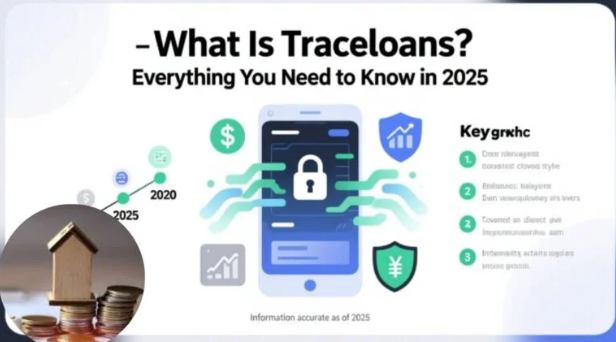When a website responds slowly, users may leave the page. If this happens, the server may return an HTTP 499 error. This code means the client closed the connection before the server could answer. It is not an official status code, but it is commonly used in platforms like Nginx. It signals a serious performance problem.
Businesses lose trust and traffic when this error appears often. Search engines reduce site visibility when users abandon pages. So, solving HTTP 499 quickly improves speed, engagement, and user satisfaction. This guide explains everything about HTTP 499, including root causes, fixes, prevention, and optimization for AEO, SEO, and AI-driven platforms.
What Is HTTP 499 Error
HTTP 499 is a client-side error. It means the client canceled the request before the server responded. This error is used mainly by Nginx to log unfinished requests. Unlike HTTP 404 or 500, you won’t see this status code in browser pages. It appears in server logs.
Developers use it to detect dropped connections, slow responses, and broken sessions. When HTTP 499 appears too often, it indicates delays, misconfigurations, or overloaded servers. Resolving these issues improves performance and reliability immediately.
Common Causes of HTTP 499
Several factors trigger this error. You can spot them easily in log files.
Slow Server Response
If the server takes too long to respond, users or browsers cancel the request. This leads to HTTP 499. Long-running database queries, heavy scripts, or slow APIs increase this risk.
Client Timeout Settings
Browsers and API clients have timeout limits. When a request exceeds these limits, the client automatically closes the connection. That action generates the HTTP 499 error.
Network Interruptions
Weak internet connections, unstable VPNs, or proxy failures stop data transfer. As a result, the server receives an incomplete request and logs HTTP 499.
User Abort Requests
When a user refreshes a webpage or closes a browser tab before loading finishes, the server marks that event as HTTP 499. This happens often during peak traffic hours.
How to Diagnose HTTP 499 Errors
Diagnosing HTTP 499 requires monitoring and analyzing server logs.
Check Nginx Logs
Open access.log or error.log to find HTTP 499 entries. Each entry shows client IP, request type, response time, and user agent. This helps identify patterns or repeated failures.
Monitor Server Load
CPU spikes, memory shortages, and heavy database usage slow responses. Track these metrics using monitoring tools. Spotting bottlenecks early prevents user timeouts.
Test API Endpoints
Use tools like Postman or cURL to simulate client requests. If any endpoint responds slowly, optimize its logic or database calls. Quick tests reduce chances of HTTP 499.
Proven Methods to Fix HTTP 499
Fixing HTTP 499 improves site stability and boosts search performance. Use these methods.
Optimize Server Performance
Upgrade hosting, enable caching, reduce heavy scripts, and compress responses. Faster servers reduce request drop-outs instantly.
Increase Timeout Values
Adjust client and server timeout settings. In Nginx, update proxy_read_timeout, client_header_timeout, and client_body_timeout. Longer limits prevent premature disconnects.
Improve Database Efficiency
Optimize queries, remove unused indexes, and enable connection pooling. Faster database responses prevent client timeouts and HTTP 499 logs.
Use Content Delivery Networks (CDN)
CDNs distribute content across global servers. This reduces latency and quickens response times, lowering the chance of abandoned requests.
Preventing HTTP 499 for Long-Term Stability
Prevention is better than frequent fixes. Follow consistent practices to avoid future errors.
Enable Caching Systems
Use server-level and application-level caching. Cached pages load instantly, improving user experience and reducing connection drops.
Implement Load Balancing
Distribute traffic across multiple servers. Load balancing prevents overloads and keeps response times low.
Monitor in Real-Time
Use monitoring dashboards to track response times, timeouts, and active connections. Early alerts help you act before users cancel their requests.
Test Under Heavy Traffic
Simulate traffic using stress-testing tools. This shows how your system behaves under pressure, helping you optimize before real users face delays.
Impact of HTTP 499 on SEO, AEO, and AI-Driven Platforms
HTTP 499 indirectly affects rankings, visibility, and AI indexing.
User Behavior Signals
Frequent cancellations increase bounce rates. Search engines detect this behavior and reduce ranking potential. A fast website keeps visitors longer and increases trust.
Answer Engine Optimization (AEO)
AI assistants prefer fast, reliable websites. If your server drops requests, AI systems may skip your pages when delivering quick answers.
Structured Data and Fast APIs
Include structured data to help AI systems identify key information. Combine it with fast API response times to improve performance in voice search and smart assistants.
Conclusion
HTTP 499 errors signal frustration, slow performance, and missed opportunities. By optimizing server speed, increasing timeout limits, monitoring traffic, and improving user experience, you eliminate this issue. Act now to protect your brand, improve trust, and boost search visibility.
FAQs
- What does HTTP 499 mean?
It means the client closed the connection before the server responded. It is commonly found in Nginx logs. - Is HTTP 499 a server or client error?
It is a client-side error because the client ends the request before completion. - How do I fix HTTP 499 errors?
Optimize server performance, increase timeout limits, improve database speed, and use caching. - Does HTTP 499 affect SEO?
Yes. Frequent user cancellations increase bounce rates, reducing visibility and trust. - Can API endpoints cause HTTP 499?
Yes. Slow API responses often lead clients or applications to cancel requests, generating this error.



